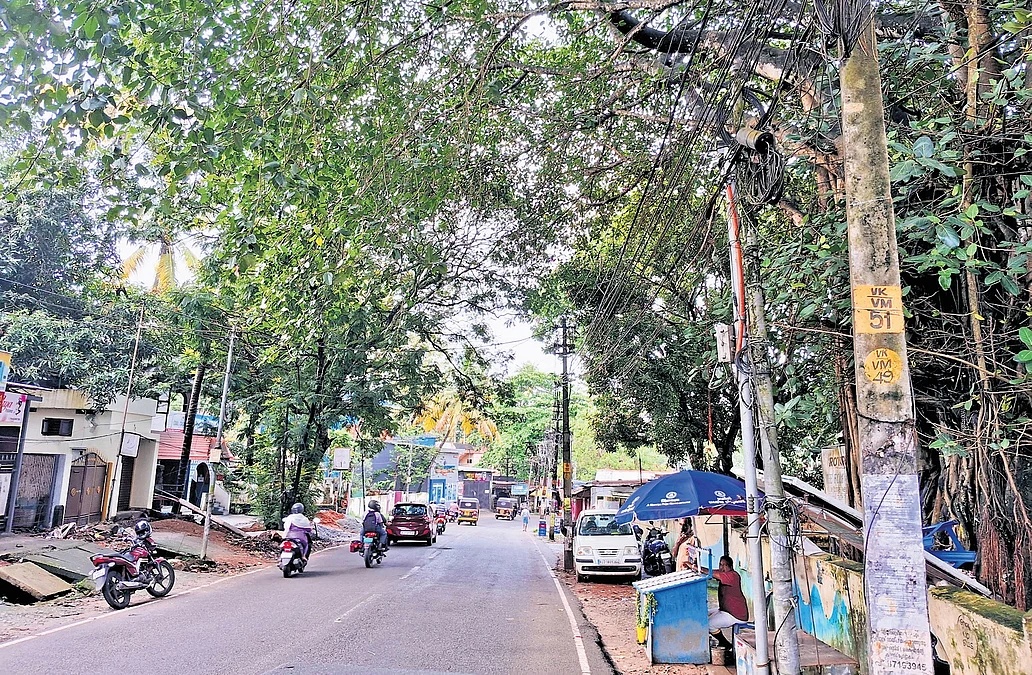
Deadly Hazards Lurking in Public Spaces
Thiruvananthapuram’s streets reveal a grim reality: hazardous tree branches loom dangerously over live electric lines, creating lethal risks in schools and busy junctions. A recent electrocution incident has sparked public outrage, yet authorities appear unresponsive. At the Government LP School in Kanjirampara, branches hang precariously above power cables, endangering students and staff. Residents argue that safety audits are mere formalities, with one parent stating, ‘Why haven’t these obvious dangers been addressed?’ Similar risks persist at the Government Vocational HSS in Vattiyoorkavu, where a locked Union government property allows branches to dangle over critical infrastructure. These incidents highlight systemic failures in urban safety management, raising questions about accountability and urgency.
Challenges in Addressing Power Line Hazards
Residents and experts demand coordinated action to mitigate risks, but bureaucratic hurdles impede progress. A retired KSEB official, speaking on condition of anonymity, revealed the agency’s operational constraints: ‘We need more ground-level staff, but cutting branches on private or central lands requires forest department permissions.’ This highlights the tangled web of jurisdictional responsibilities, with central agencies often uncooperative. At Baker Junction and Kanakakunnu Palace, similar hazards persist, exacerbated by outdated equipment and lack of resources. The recurring monsoon-related dangers underscore the need for pre-monsoon inspections, yet the KSEB remains mired in administrative delays, leaving communities vulnerable to preventable tragedies.
Calls for Interdepartmental Collaboration
Residents and civic leaders advocate for a unified strategy to address the crisis, emphasizing the need for interdepartmental coordination. Simon Antony, a retired central government employee, suggested, ‘A joint meeting involving forest, education, and Union officials is essential.’ This reflects a broader frustration with fragmented governance, where multiple agencies hold sway over critical infrastructure. The KSEB’s role is further complicated by its reliance on external permissions, creating a bottleneck in hazard resolution. Experts argue that without dedicated funding and modern tools, the agency cannot effectively tackle these issues, leaving the public exposed to avoidable risks. The lack of transparency and accountability has fueled public distrust, demanding urgent reforms to prevent future fatalities.
Systemic Failures and Public Outcry
The situation has sparked widespread condemnation, with citizens demanding immediate action. A retired KSEB official lamented, ‘We’ve become scapegoats while root issues remain unaddressed.’ This sentiment echoes among residents who feel their concerns are dismissed. The absence of proactive measures, despite repeated incidents, has eroded public confidence in institutional competence. Calls for greater transparency and resource allocation have grown louder, with experts stressing the need for a comprehensive safety overhaul. The tragedy underscores the urgency of addressing systemic gaps, ensuring that infrastructure management prioritizes human safety over bureaucratic inertia. Without decisive action, Kerala’s power grid safety crisis will continue to endanger lives, demanding a paradigm shift in governance and accountability.
Towards a Safer Future
Experts and residents alike emphasize the necessity of modernizing infrastructure management and fostering collaboration between departments. ‘Outdated equipment and lack of funding are major obstacles,’ noted M K Gopal, a retired KSEB official. To prevent further tragedies, authorities must prioritize pre-monsoon inspections and equip workers with advanced tools. The KSEB’s role is critical, but its effectiveness is hampered by jurisdictional complexities and insufficient resources. A unified approach involving the forest department, education authorities, and central agencies is essential to resolve these challenges. Public accountability must also be strengthened, with transparent reporting and timely interventions. Only through collective effort can Kerala address its power grid safety crisis, ensuring that its streets are free from lethal hazards and its citizens are protected from preventable tragedies.






